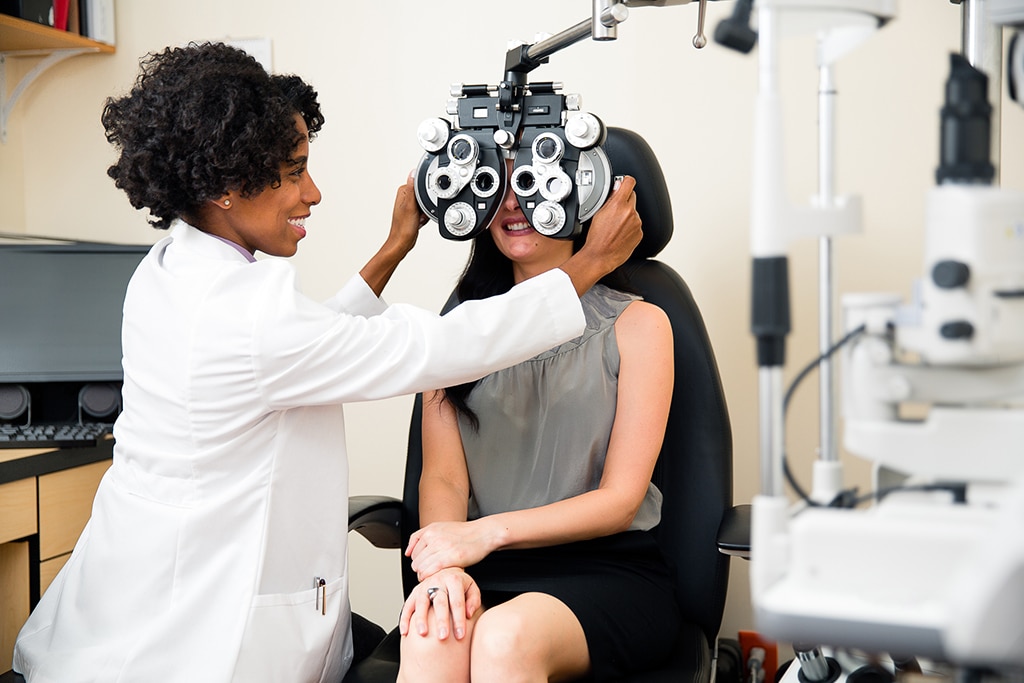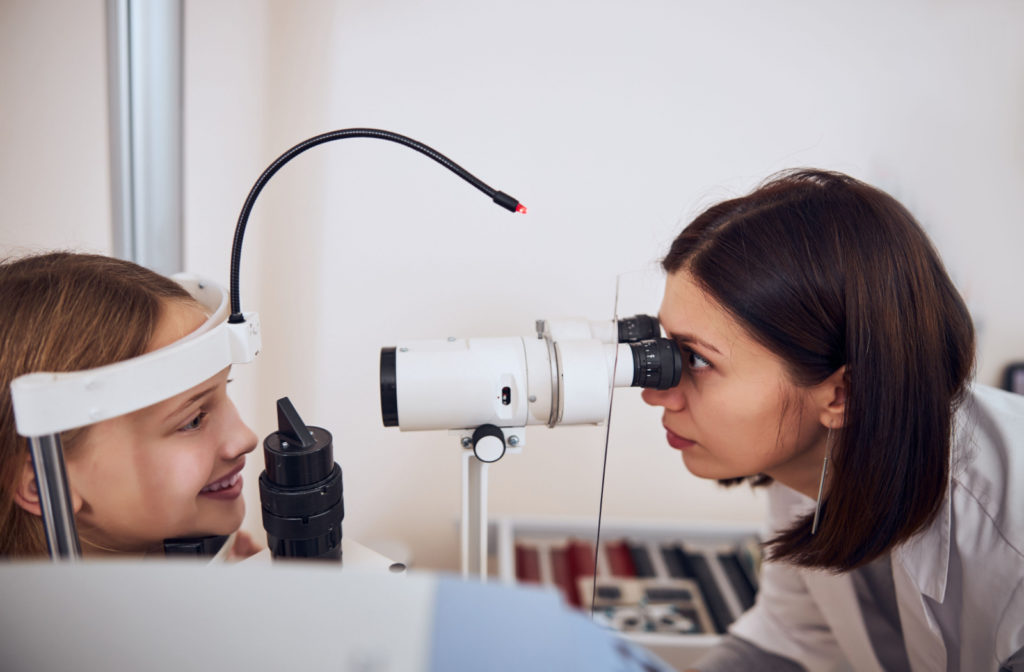Explore Advanced Providers at Opticore Optometry for Eye Wellness
Explore Advanced Providers at Opticore Optometry for Eye Wellness
Blog Article
Checking Out the most up to date Technical Improvements in Optometry and What They Mean for Eye Doctors
In the ever-evolving field of optometry, recent technological advancements are improving how specialists approach eye care. From the precision of Optical Comprehensibility Tomography to the nuanced insights used by AI-driven analysis devices, these advancements are establishing new requirements in patient evaluation and treatment. Teleoptometry is positioned to redefine ease of access, guaranteeing that knowledge transcends geographical restrictions. As these improvements penetrate the method, eye doctors are encountered with the difficulty of accepting these devices to enhance patient outcomes. Yet, the concern continues to be: just how will these technical shifts redefine the functions and obligations within the career?
Technologies in Diagnostic Equipment
Progressing the field of optometry, technologies in diagnostic tools have actually changed the method eye treatment experts analyze and detect visual disabilities and eye problems. The past decade has actually experienced substantial technical improvements, enabling even more exact and thorough analyses.
An additional secret advancement is the introduction of sophisticated corneal topography systems, which map the surface curvature of the cornea with accuracy. These devices are specifically beneficial for suitable contact lenses and detecting corneal problems. Electronic retinal imaging has transformed standard ophthalmoscopy, providing detailed, scenic sights of the retina that facilitate comprehensive visual evaluations.
The growth of wavefront aberrometry has likewise been critical, making it possible for the evaluation of refractive errors with unparalleled accuracy (Opticore Optometry). This technology aids in personalizing rehabilitative lenses and improving medical outcomes for refractive surgical treatments. Jointly, these diagnostic improvements empower eye doctors to provide superior patient care, making certain early intervention and customized treatment strategies, inevitably enhancing aesthetic health outcomes
AI in Patient Administration
Building on the structure of advanced analysis devices, the unification of expert system (AI) in client monitoring represents a transformative leap for optometry. AI systems are significantly used to improve effectiveness, accuracy, and customization in person care. By analyzing large quantities of data, AI can recognize patterns and anticipate possible eye conditions, allowing eye doctors to customize interventions better. This ability is vital in handling chronic eye illness such as glaucoma and diabetic person retinopathy, where early detection and continual tracking are vital.
Additionally, AI-driven systems help with streamlined patient communications and administrative processes. Automated scheduling, virtual appointments, and customized follow-up strategies not only improve person fulfillment yet likewise enhance time administration for experts. These systems can triage individuals based upon the necessity of their problems, ensuring that those in important requirement receive timely attention.
Additionally, AI boosts decision-making by supplying optometrists with evidence-based suggestions and treatment pathways. By incorporating information from electronic health and wellness records, AI tools use understandings that inform professional decisions, lowering the danger of mistakes and improving patient outcomes. As AI remains to progress, its role in client administration will likely expand, reshaping the landscape of optometric treatment.
Advances in Retinal Imaging
In the world of optometry, retinal imaging has actually witnessed amazing technological innovations that are improving diagnostic abilities and patient treatment. Developments such as Optical Coherence Tomography (OCT) and fundus photography have changed exactly how eye doctors visualize and analyze the retina.
Improved imaging modalities like OCT angiography are additional refining diagnostic accuracy. Optometrist Chino. Such innovations facilitate the recognition of minute retinal modifications that could symbolize disease progression.
Furthermore, developments in fabricated intelligence are increasing retinal imaging by allowing automated evaluation of huge datasets. These systems aid eye doctors in determining patterns indicative of pathology, therefore boosting analysis precision and efficiency. Jointly, these innovations pop over to this web-site are changing retinal imaging right into a foundation of contemporary eye treatment, enhancing outcomes and increasing therapeutic opportunities.
Teleoptometry's Growing Duty
Teleoptometry is significantly coming to be a crucial element of eye care, driven by improvements in digital interaction and analysis tools. As optometry embraces digital transformation, teleoptometry assists in remote examinations, enabling eye doctors to prolong their solutions past typical borders. This is especially advantageous in underserved and country areas where accessibility to specialized eye care is commonly restricted. By leveraging high-resolution video clip conferencing and advanced retinal imaging, eye doctors can perform detailed eye tests from afar, ensuring timely medical diagnosis and therapy.
The combination of expert system (AI) more enhances teleoptometry, allowing the evaluation of aesthetic information and assisting in the detection of ocular conditions such as glaucoma and diabetic person retinopathy. AI-powered algorithms can rapidly interpret intricate imaging data, supplying optometrists with valuable insights that strengthen medical decision-making.
In addition, teleoptometry supports connection of care through seamless combination with electronic health documents (EHRs), enabling eye doctors to preserve thorough patient histories. When consulting with various specialists., this ensures that patients get regular and tailored treatment also.
Regardless of these advantages, obstacles continue to be, Learn More consisting of guaranteeing data security and handling client expectations. Teleoptometry represents a significant stride towards more easily accessible, efficient, and patient-centered eye care. As technology advances, its duty is positioned to expand further.

Future Patterns in Eye Treatment
A myriad of innovative trends is established to reshape the future of eye care, driven by technological developments and the advancing needs of people. One substantial pattern is the assimilation of expert system (AI) in diagnostics, which assures to enhance the accuracy and performance of eye assessments. AI formulas can analyze vast quantities of information from retinal photos, possibly detecting problems like diabetic retinopathy and glaucoma earlier than typical approaches.
Moreover, customized medication is getting traction in optometry, with genetic testing informing customized treatment plans. This strategy aims to enhance client results by customizing treatments to private genetic profiles. Wearable technology, such as wise get in touch with lenses, is also coming up, providing real-time tracking of intraocular stress or glucose degrees, thus providing continual insights into eye and systemic health.
The fostering of enhanced truth (AR) and online fact (VIRTUAL REALITY) in training and client education is an additional emerging pattern. These technologies use immersive experiences that can improve understanding and abilities both for clients and optometrists. As these patterns progress, eye doctors must stay abreast of technological developments to give innovative treatment, making sure better client results and fulfillment in click for info the vibrant landscape of eye treatment.
Final Thought

Jointly, these diagnostic advancements equip optometrists to deliver remarkable patient care, guaranteeing very early treatment and customized treatment methods, inevitably enhancing visual wellness end results.

As these modern technologies proceed to develop, eye doctors must adapt and include them into technique, ultimately optimizing operations efficiency and raising the criterion of eye treatment delivered to clients.
Report this page